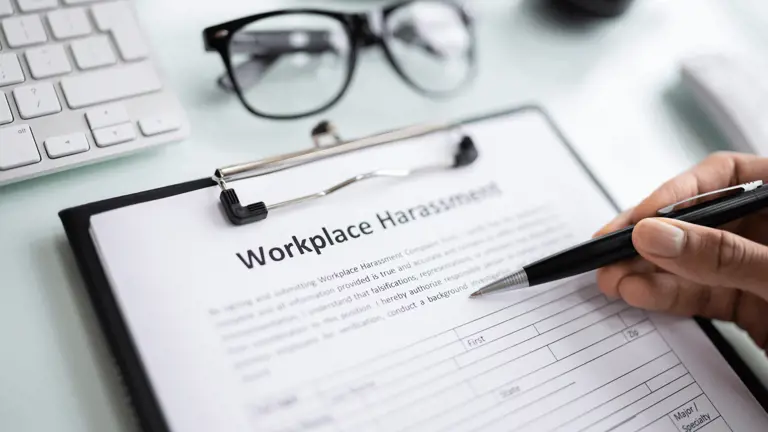The Worker Protection (Amendments of Equality Act 2010) Act 2023 was passed in October 2023 and is now expected to come into force on 26 October 2024. This legislation will introduce a new preventative duty that employers must take reasonable steps to prevent sexual harassment of workers in the course of employment (s40A). This duty will exclusively apply to sexual harassment. As of 10 October 2024, the Employment Rights Bill proposes to amend this duty so that employers must take ‘all’ reasonable steps to prevent sexual harassment of workers in the course of employment. While the proposals in the Employment Rights Bill are not likely to come into force for another two years, if at all, they will generally set a higher bar for employers to reach to rely on this defence.
The ‘Sexual Harassment and harassment at work: technical guidance’[1] was recently published on 26 September 2024 by Equality and Human Rights Commission (ECHR). This guidance confirms that the preventative duty will require employers to anticipate situations where sexual harassment could arise, take action to prevent it happening and to proactively respond to complaints to ensure that sexual harassment does not happen again.
Employer liability
According to the EHCR guidance, an employer will be liable for sexual harassment if it is committed by any of the following people: worker to worker, worker to job applicant or former worker, agent acting on behalf of an employer to worker, and where an employer fails to address harassment to a worker by a third party which amounts to direct or indirect discrimination[2]. The Employment Rights Bill proposes to amend this to include employer liability for third party harassment.
The harassment must take place ‘in the course of employment’ which could include, but is not limited to, working from home, a training course, external meeting or a work party. An employer must prove to a tribunal that they have taken ‘reasonable steps’ to prevent sexual harassment. What constitutes as ‘reasonable steps’ is highly dependent on factors such as the size and type of business, the number of workers, the identified risks, and the resources available to the business. The Employment Rights Bill will grant the power to introduce regulations that clearly stipulate what ‘reasonable steps’ and how an employer can therefore take ‘all reasonable steps’. For now, it is important that any decisions made prioritise your workforce and that the best protections are put in place.
What is changing and why?
The legislative position, as set out in section 109 Equality Act 2010, is that employers have a defence to employee action if they can show that they took ‘all reasonable steps’. Employees are therefore protected from sexual harassment under this all-inclusive section, however there is no separate duty to prevent sexual harassment. The new preventative duty will address this. We can speculate that recent statistics and surveys have contributed to this decision. Notably, the Office of National Statistics found that ‘in 2023, 26% of those who have experience sexual harassment said that they experienced this in the workplace’[3]. This frightening statistic reinforces the need for specific legislative change.
Failure to comply?
While a worker cannot bring a standalone claim for breach of this preventative duty, if an employer is found to have breached the duty, the Tribunal can award a 25% compensation uplift. This uplift will be considered alongside past and future injury to feelings and past and future loss of earnings. The financial outcome for an employer could therefore be significant.
The ECHR are also able to investigate businesses themselves and they have specific powers to take action[4], which could lead to reputational damage. Generally, this new duty could also see an increase in sexual harassment and whistleblowing claims made to the Employment Tribunal. Notably, under the new Employment Rights Bill, ‘Protected disclosures’ (Part 4A of the Employment Rights Act 1996) will now explicitly include sexual harassment for the purpose of a whistleblowing claim. Finally, your workforce could become unhappy, so it is increasingly important to keep your workers protected and promote a culture of safety, respect and zero-tolerance.
What does it mean for employers?
It is advisable that employers are alert this legislative change and seek to enforce any recommendations that are included in ECHR’s ‘Sexual Harassment and harassment at work: technical guidance’[5] and their ‘Employer 8-step guide: Preventing sexual harassment at work’[6] which was also published on 26 September. The 8-step guide recommends that employers enforce the following changes[7]:
- Anti-sexual harassment policies and procedures;
- Develop effective reporting procedures;
- Regularly engage with staff;
- Undertake regular risk assessments;
- Ensure that staff are thoroughly trained;
- Understand how to deal with a complaint or report of sexual harassment; and
- Regularly monitor and evaluate training, understanding and any reports.
We encourage every employer to read this guidance carefully to ensure that your workers are protected and that you are not breaching this preventative duty.
What does it mean for businesses?
A business should consider areas of risk, particularly for those who regularly deal with third parties. It may be advisable to update any terms and conditions which are provided to third parties and to also provide addendums to supplier contracts. Such updates should stipulate what constitutes as sexual harassment, what is expected of a third party and any consequences for non-compliance. Other good practices could include placing notices in your place of work, recording phone calls, CCTV, training to specifically tackle third party harassment and regularly overseeing all policies and procedures.
Aaron & Partners can assist with the drafting of effective anti-sexual harassment policies and procedures, staff training and dealing with any complaints or reports made. Please contact us for more information.
[1] Sexual harassment and harassment at work: technical guidance | EHRC (equalityhumanrights.com)
[2] Sexual harassment and harassment at work: technical guidance | EHRC (equalityhumanrights.com)
[3] Experiences of harassment in England and Wales - Office for National Statistics (ons.gov.uk)
[4] Sexual harassment and harassment at work: technical guidance | EHRC (equalityhumanrights.com)
[5] Sexual harassment and harassment at work: technical guidance | EHRC (equalityhumanrights.com)
[6] Employer 8-step guide: Preventing sexual harassment at work | EHRC (equalityhumanrights.com)
[7] Employer 8-step guide: Preventing sexual harassment at work | EHRC (equalityhumanrights.com)

Paul Hennity
Employment Law Partner
Paul is a Partner in our Employment Law team, currently dividing his time between our Chester and Wirral offices.


